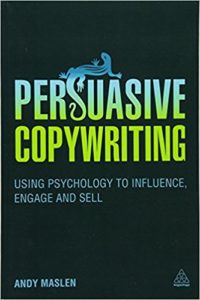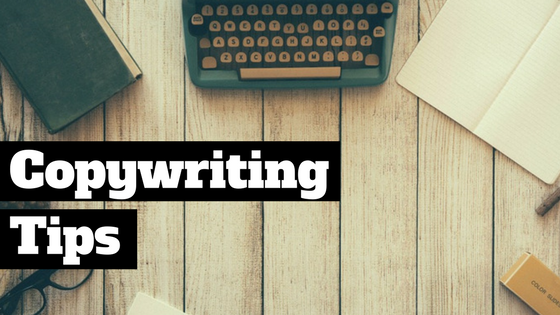I’ve been reading more books on copywriting like Web Copy That Sells. I was given this book as a gift from a friend who knew how much I wanted to become a better sales writer.
 Unlike some of the other books that are out there, Persuasive Copywriting by Andy Maslen offers a few different learning tools, like quizzes, exercises, and real-world examples. It was very helpful for cementing some of the concepts he discussed in the book.
Unlike some of the other books that are out there, Persuasive Copywriting by Andy Maslen offers a few different learning tools, like quizzes, exercises, and real-world examples. It was very helpful for cementing some of the concepts he discussed in the book.
I thought it was laid out very well and almost had a textbook vibe (except not as intensive or boring). As a newcomer to the copywriting world, I finally gained some clarity on little-discussed topics like why copywriters will do certain things like have call-to-actions that are benefit-focused.
This book might not be a good fit if you’re already an expert, but for beginners, I think it offers good instruction and neat little tools to make sure you maintain the information as you go. The humor was kind of hokey, but aside from that, I would recommend it.
I didn’t find the chapters on social media or content marketing to be as interesting. I’m already pretty familiar with that. For those that are new to those topics, it could be a good intro.
Below, I’m going to share some of my notes from the book. I do this to encourage you to read it, but also because I want to be able to look back in the future and remember which concepts I took from the book.
My Notes
- Emotions have evolved as a way to enhance the salience of events and increase our survival. True of positive and negative emotions. Help guide decisions.
- eBooks and novels don’t contain headlines but people eat them up.
- Emotional copywriting is based on the anatomical structure of brain.
- Emotional states are bodily states that are externally visible. Feelings are internal maps of those emotions.
- Emotion drives action. Information drives analysis.
- Limbic system lights up when experiencing emotions, listening to stories, and making decisions.
- Information is important because it’s used to rationalize our decisions. It doesn’t drive decision-making, it reinforces it.
- Make reader feel like it’s a good idea, not just think it is.
- Write about people that the reader can identify with.
- Remind readers of story, benefits, right decision.
- Curiosity is the one emotion that rules them all.
- Identify dominant emotion tied to product and problem
- How does customer feel about the problem?
- How will prospect’s life feel different after buying?
- Emotional map of consequences. How will others feel?
- People buy because of what you promise, not what you provide.
- You must prove your promise is going to come true.
- Promises sound best when you phrase them as a command or prediction.
- Poessing secrets confers social status. People love hearing them. Rare.
- Protagonist is the person we want reader to identify with
- Picture life with our product
- A reader imagining what you are describing has already bought what you are offering.
- Promises make great headlines.
- How your customer feels is crucial to establishing rapport, trust, and ultimately, the sale.
- Your customers state of mind. Figure them out. Identify their pain point. Show them how their product makes the pain go away.
- What do they like, love, hate, values, see themselves, others see them, like others to see them, they would change, why would they want to change, how would they, what do they want to know.
- Copywriting is behavior modification. Empathy, insight, and understanding.
- Compliments reinforce all the ideas about ourselves that we hold dear.
- Expensive is different from costly.
- CTA: Focus on the promise, not the purchase.
- Never ask a question which your reader could say no to.
- The best way to engage emotions and bring reader closer to a sale is to use the power of language to create visual or sensory imagery.
- Repetition works well in groups of three.
- It’s not about what you want to say. It’s about what your reader wants to hear.
- Distract your reader, and risk losing the sale. Don’t try to be an entertainer. You’re closing a deal, not providing entertainment.
- Get prospects fo experience, as fully as possible, what life would be like if they already bought the product.
- We are genetically programmed to look first, read second. Pictures. Video. People buy the promise encapsulated in the picture and don’t even read the copy sometimes.
- Show person delivering the service or show customer experiencing it.
- Images need caption.
Don’t forget to pickup a copy of Persuasive Copywriting by Andy Maslen.
